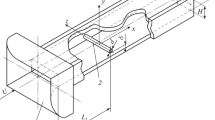Abstract.
The Lighthill acoustic analogy combined with Reynolds-averaged Navier–Stokes flow computations are used to investigate the ability of existing technology to predict the tonal noise generated by vortex shedding from a circular cylinder for a range of Reynolds numbers (100 < Re < 5 million). Computed mean drag, mean coefficient of pressure, Strouhal number, and fluctuating lift are compared with experiment. Two-dimensional calculations produce a Reynolds number trend similar to experiment but incorrectly predict many of the flow quantities. Different turbulence models give inconsistent results in the critical Reynolds number range (Re≈ 100000). The computed flow field is used as input for noise prediction. Two-dimensional inputs overpredict both noise amplitude and frequency; however, if an appropriate correlation length is used, predicted noise amplitudes agree with experiment. Noise levels and frequency content agree much better with experiment when three-dimensional flow computations are used as input data.
Similar content being viewed by others
Author information
Authors and Affiliations
Additional information
Received 5 May 1998 and accepted 28 September 1998
Rights and permissions
About this article
Cite this article
Cox, J., Brentner, K. & Rumsey, C. Computation of Vortex Shedding and Radiated Sound for a Circular Cylinder: Subcritical to Transcritical Reynolds Numbers . Theoret. Comput. Fluid Dynamics 12, 233–253 (1998). https://doi.org/10.1007/s001620050108
Issue Date:
DOI: https://doi.org/10.1007/s001620050108




